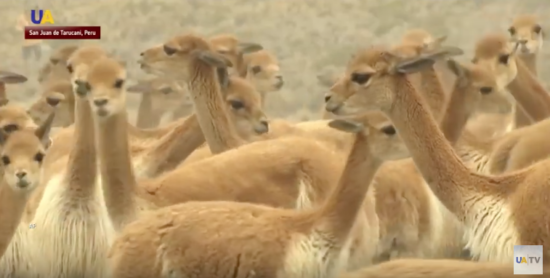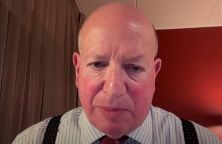High in the Peruvian Andes, the vicuñas are treasured by locals, especially for their wool. In Incan times, only royalty were permitted to wear it, but today it’s a product sought all over the world. It is considered the finest fiber in the world and fetches high prices in fashion stores from Milan to Mumbai. Procuring the fleece is no mean feat, especially because the wild vicuñas only live in these remote, high altitude Andean plains. Llamas, alpacas and vicuñas are an important part of village life through local customs and rituals.
“San Juan de Tarucani has a wide territory and a very small population, but we are dedicated to the breeding of South American camelids – llamas and alpacas,” said Orlink Choque Velasquez, Mayor of San Juan de Tarucani.
Here, the vicuñas roam free, grazing the native ichu bushes. Hunted down as part of a delicately choreographed ritual, the vicuña is shorn for it highly prized wool. The rituals of capturing and shearing the vicuña date to ancient times, and is called “chaccu,” which means “capturing” in the Quechua language.
“Since the time of the Incas, the “chaccu” of the vicuñas has been conducted to shear the vicuñas. And you know that the wool fiber of vicuñas is the finest fiber in the world. That is why the community is organized under an association. We have been working since 2001,” said Juan Francisco Zapana, local resident.
With the vicuñas captured, the animals are shorn, then released back to their habitat in the Salinas Aguada Blanca nature reserve, where they’re protected for the rest of the year by rangers and shepherds.
The highly coveted fleece, meanwhile, is picked of white hairs, and prepared for sale. The fleece can be sold for $715 a kilogram, and coats can be sold for up to $10,000.
“This certificate, with its number, gives you a traceability, it’s a designation which tracks the fiber, from its departure, from its shearing, to the final end of the product,” said Maribel Garcia, seller of vicuña wool clothing.
Once on the brink of extinction, the vicuña is now thriving again according to the International Trade Center. In the last decade, Peru has produced 78 tons of vicuña fiber. According to the International Trade Center, trade in vicuña fiber has increased by 78% in the 10 years to 2018.













